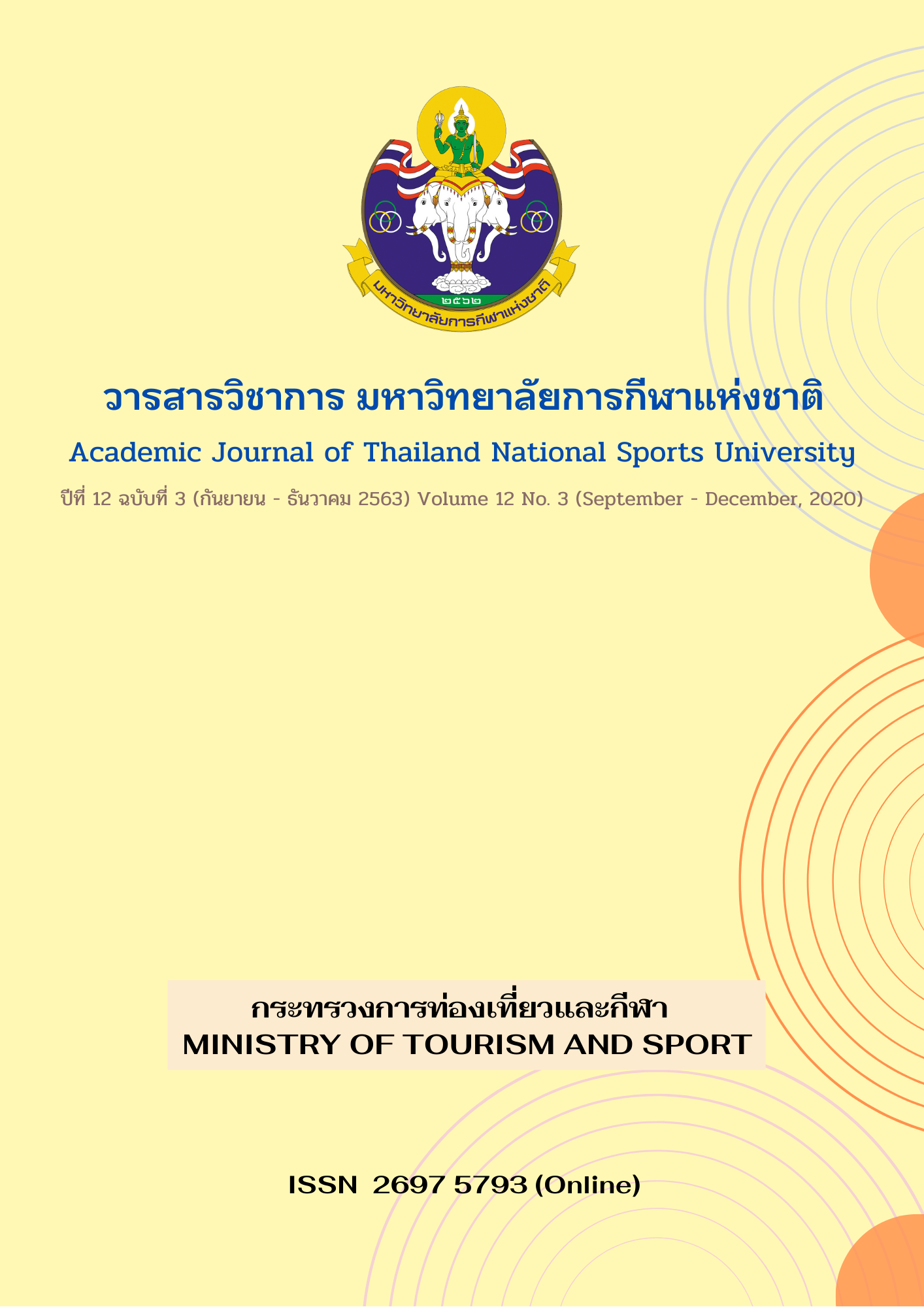BIOMECHANICS OF 3-POINT SCORING IN PROFESSIONAL AND AMATEUR BASKETBALL PLAYERS
Main Article Content
Abstract
Kinetics and Kinetics are important to the efficiency and stability of the 3-point scoring, which is the highest score in basketball, which can bring the team back to have a leading score.
This research aimed to study the biomechanics variables and the correlation in the 3-point basketball shooting.
The samples consisted of four professional and six amateur’s basketball players, who fired 5 balls, 2 sets of breaks during each shot, 1-3 minutes and rested between 5-7 minutes. This research was conducted in an experimental research design. The data were analyzed with a 3D motion analysis program by six 280 Hz cameras. The data were analyzed by a mean ( ), standard deviation (S.D.) value of biomechanics variables of 3-point scoring in professional and amateur basketball players using Pair t-test statistic and Pearson correlation at the statistical significance level of .05.
The results of biomechanics variables of 3-point scoring showed that positive correlation was found between the shoulder angle and the elbow angle (p = .002), between the wrist angle and the knee angle (p = .000), while negative correlation was found at the angle of shooting between the elbow angle and the ankle angle (p = .004), and shoulder angle and ankle angle (p = .019) at the level of .05. Additionally, no significant differences were found between professional and amature basketball players at the level of .05.
Article Details
The published article is a copyright of the Academic Journal of Thailand National Sports University. The passage appeared in each article in this academic journal is a perspective of each author which is not related to the journal. Each author is required to be responsible for all components of his/her own article. If there are any mistakes, each author must be responsible for those mistakes on his/her own.
References
Ammar, A., Chtourou, H., Abdelkarim, O., Parish, A., & Hoekelmann, A. (2016). Free throw shot in basketball: Kinematic analysis of scored and missed shots during the learning process. Sport Sciences for Health, 12(1), 27-33.
Arias, Jose L. (2012). Influence of ball weight on shot accuracy and efficacy among 9-11-year-old male basketball players/Utjecaj tezine lopte na preciznost i ucinkovitost bacanja na kos kosarkasa u dobi od 9 do 11 godina. (Original scientific paper)(Report). Kinesiology, 44(1), 52-59.
Chiao-Fang Hung, Chung-Chiang Chen, Shin-Hung Lin, and Tien-Kan Chung (2017). Finger and palm dynamic pressure monitoring for basketball shooting. Hindawi Journal of Sensors Volume 2017, Article ID 9352410, 5 pages.
Gaetano, Raiola, Gaetano, Altavilla, Domenico, Tafuri, & Mario, Lipoma. (2016). Analysis of shot in basketball: Kinematic analysis of scored and missed shots during the learning process. Sport Sciences for Health, 12(1), 27-33.
Jan Legg,David B. Pyne , Stuart Semple & Nick Ball. (2017). Variability of Jump Kinetics Related to Training Load in Elite Female Basketball. Sports 2017, 5, 85; learning a basketball shot. Journal of Physical Education and Sport, 16(1), 3-7. doi:10.3390/sports5040085.
Okazaki, Victor Hugo Alves, & Rodacki, Andre Luiz Felix. (2012). Increased distance of shooting on basketball jump shot. Journal of Sports Science and Medicine, 11(2), 231-237.
Okubo, Hiroki; Hubbard, Mont. (2015). Kinematics of Arm Joint Motions in Basketball Shooting. Procedia Engineering, 112, 443-448.
Verhoeven, F. M., & Newell, K. M. (2016). Coordination and control of posture and ball release in basketball free-throw shooting. Human Movement Science, 49, 216-224. doi:10.1016/j.humov.2016.07.007.


